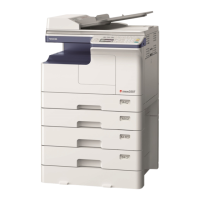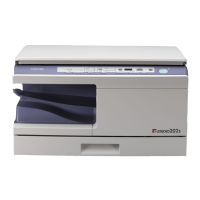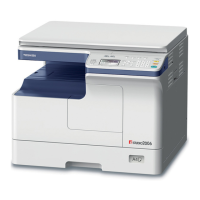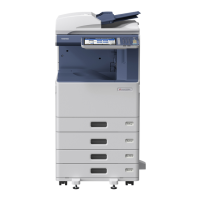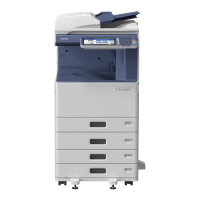
Do you have a question about the Toshiba e-STUDIO 206 and is the answer not in the manual?
| Functions | Print, Copy, Scan |
|---|---|
| Type | Monochrome Laser |
| Print Speed (Black) | 20 ppm |
| Print Resolution | 2400 x 600 dpi |
| Copy Speed (Black) | 20 cpm |
| Copy Resolution | 600 x 600 dpi |
| Scan Resolution | 600 x 600 dpi |
| Monthly Duty Cycle | 20, 000 pages |
| Paper Capacity | 250 sheets |
| Max Paper Size | A3 |
| Connectivity | USB 2.0 |
| Display | LCD |
| ADU | No |
| Memory | 32 MB |
| Interface | USB 2.0 |
| Paper Size | A5 |
| Paper Weight | 64-163 g/m² |
| Warm-up Time | Approx. 25 seconds |
Precautions for safely transporting and installing the equipment, including weight and handling.
Key safety precautions to follow during service operations, including power handling and component safety.
List of standard accessories supplied with the equipment, varying by machine version.
List of optional hardware units that can be added to the e-STUDIO166/206.
List of consumable items such as drums and toner cartridges, with regional variations.
Information on how the equipment detects abnormalities and displays error codes.
General description of the laser optical unit's role in creating the latent image.
Explanation of the circuit controlling the laser diode's output power and stability.
Detailed description of the control circuit for the main motor's rotation and speed.
General description of the paper feeding system components and purpose.
Detailed explanation of the functions of each component in the paper feeding system.
Description of the paper feeding operations from the drawer and bypass tray.
General description of the drum area, its components, and control circuits.
Detailed explanation of the functions of the drum, main charger, and cleaner.
Description of the high-voltage output control circuit for various biases.
General description of the development system and its role in image formation.
Detailed functions of the developer unit, toner cartridge, and toner motor.
Description of the toner motor control and the auto-toner circuit for density regulation.
General description of the fuser and paper exit unit, its components, and function.
Detailed explanation of the functions of the pressure roller, fuser roller, and related components.
Description of the fuser unit's operation, including heating, fusing, and energy saving modes.
Explanation of the control circuit for the fuser unit's heater lamps and temperature sensors.
Procedures for disassembling and replacing components of the fuser and exit units.
Overview of the power supply unit's internal circuits and components.




